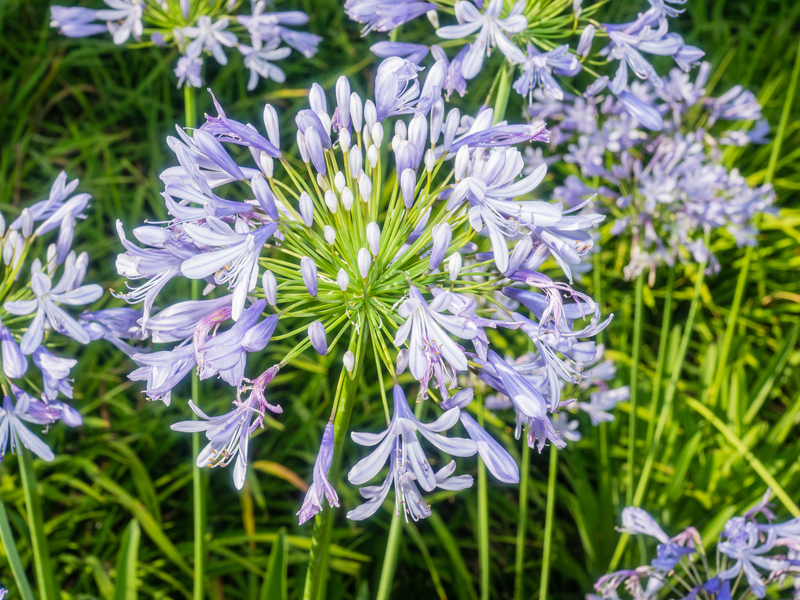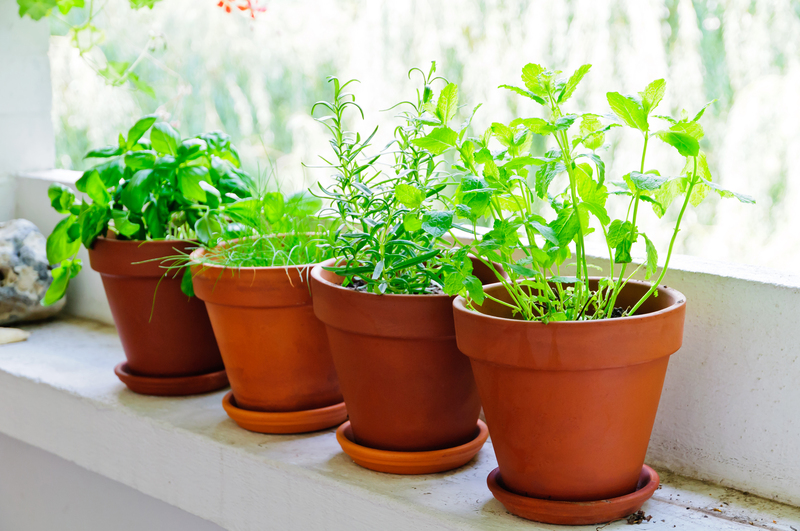Harmonizing Landscape Design with Pet Joy and Safety
Posted on 17/10/2025
Harmonizing Landscape Design with Pet Joy and Safety: The Essential Guide
Pet owners who cherish the outdoors long for a garden or yard that not only stuns with beauty but also nurtures the happiness and well-being of their beloved animals. Harmonizing landscape design with pet joy and safety ensures your outdoor space is both a sanctuary and a playground--an open invitation for tail wags and boundless fun without sacrificing aesthetics or safety. In this comprehensive guide, we dive deep into creating pet-friendly gardens that elevate your home's value, enrich your pet's life, and give you peace of mind.

Why Harmonize Landscape Design and Pet Safety?
- Enhance Pet Well-being: A thoughtfully designed backyard is not just a place to roam; it offers mental stimulation, physical exercise, and a strong bond between pets and owners.
- Prevent Hazards: Integrating pet safety into landscape architecture means eliminating toxic plants, preventing escape routes, and reducing risks.
- Protect Your Investment: Durable, pet-friendly landscaping materials prevent costly damages and add long-term value to your property.
- Boost Visual Appeal: You don't need to sacrifice curb appeal for safety--these elements can beautifully co-exist with creative solutions.
Key Principles of Pet-Friendly Landscape Design
To truly harmonize your landscape design with pet joy and safety, start by understanding your pet's behavior, personality, and specific needs. Here are foundational guidelines to follow:
- Safety First: Eliminate hazards and dangerous gaps.
- Comfort and Enrichment: Provide playing, resting, and exploring areas.
- Balance Open Space and Shelter: Pets need both free-running zones and shady retreats.
- Easy Maintenance: Use hardy plants, mulch, and surfaces that withstand digging and running.
Assessing Your Outdoor Space
Before transforming your yard, evaluate the following:
- Existing Landscaping: Are there plants that could harm your pet? Check for toxic species like lilies, tulips, and sago palms.
- Pet Behavior: Does your dog love to dig? Is your cat a climber? Design with these tendencies in mind.
- Climate and Region: Select non-toxic, regionally suited flora for minimal upkeep and optimal pet health.
Design Elements for a Pet-Friendly Landscape
Safe Fencing and Boundary Solutions
A secure yard is fundamental for pet safety. When landscaping for pets, employ invisible boundaries, privacy fences, or decorative wrought iron. Consider the following:
- Height Matters: Fences should be high enough to prevent jumping (usually 4-6 feet).
- Digging Prevention: Bury chicken wire beneath the fence or install concrete footers to deter escape artists.
- Gate Security: Use self-closing, lockable gates with pet-proof latches.
Non-Toxic Plants and Pet-Safe Gardens
Choosing the right plants is essential for harmonizing garden aesthetics with pet delight and security. Opt for hardy, non-toxic species that enhance beauty while keeping your furry friends safe. Top recommendations include:
- Sunflowers
- Snapdragons
- Basil, thyme, mint, and other culinary herbs
- Marigolds and violets
- Fescue or Kentucky bluegrass for lawns
Avoid: Oleander, foxglove, lilies, sago palm, and azaleas--they're toxic to pets.
Paths and Play Opportunities
Create engaging pet pathways using decomposed granite, flagstone, or smooth gravel. Curving trails stimulate your pet's curiosity and reduce plant trampling. Include playful elements such as:
- Mounds and obstacles for agility
- Open runs for fetch and sprinting
- Puzzle feeders and sniffing stations for mental stimulation
Water Features and Hydration Zones
Ponds and fountains add serenity while offering a fresh water source. For pet joy and safety, ensure all water elements are shallow and have easy exit points. Consider:
- Pet drinking fountains for constant hydration
- Wading pools for dogs in warm climates
- Covered or netted ponds to prevent risky swims
Shade, Shelter, and Rest Zones
Ample shade protects animals from sunstroke and overheating. Integrate:
- Natural shade with mature trees or tall shrubs
- Canopies and pergolas for stylish, functional shelter
- Outdoor pet houses or beds in cool, comfortable areas
Soft Surfaces and Paw-Friendly Ground Covers
Hardscapes look stunning, but pets appreciate softer terrains. Use materials and plants such as:
- Clover and creeping thyme: Tough, lush, and gentle on paws
- Mulches: Avoid cocoa bean mulch (toxic!) and opt for pine, cedar, or recycled rubber alternatives
- Artificial turf: For pristine lawns with drainage for pet waste
Mitigating Common Landscape Hazards for Pets
Toxic Plants and Chemicals
Landscaping with pets in mind means avoiding hidden dangers.
- Research Plants: Regularly audit your garden for new and existing plants that could be toxic.
- Safe Pest Control: Use natural repellents (neem oil, diatomaceous earth) rather than chemical sprays.
- Fertilizer Caution: Use pet-safe organic fertilizers to eliminate chemical ingestion risks.
Secure Storage for Tools and Substances
Keep pets safe from sharp tools, fertilizers, and mulch:
- Store tools in locked sheds or garages
- Seal fertilizers and pesticides in pet-proof containers
- Dispose of yard waste and clippings promptly
Pest and Wildlife Management
To create a pet-friendly outdoor sanctuary, minimize wildlife attractants while keeping your pet safe:
- Enclose compost bins and seal garbage tightly
- Install motion-activated lights to deter wandering critters
- Supervise outdoor activity especially in snake or coyote-prone regions
Innovative Features to Maximize Pet Joy
Dedicated Dig Zones
For pets compelled to dig, why fight it? Construct a special "dig zone" filled with soft sand or soil, and bury toys or treats to encourage use.
Agility and Adventure Courses
Build agility features such as hoops, ramps, tunnels, and jumping logs. Cats love climbing posts and elevated walkways; dogs enjoy barreling through tunnels and balancing on beams.
Observation Decks and Lookouts
Cats and dogs both love to observe their domain. Install platforms, window boxes, or sturdy benches for elevated sight lines.
Enrichment Plantings
Include catnip, cat grass, and lemongrass for feline fun. Add edible herbs for canine foraging, ensuring all are safe to consume.
Maintenance Tips for Harmonized Landscapes
- Regularly inspect fences for holes and wear
- Remove weeds and debris to prevent hidden dangers
- Keep water features clean and free from mosquito larvae
- Trim lawn and hedges to maintain visibility and discourage pests
- Scrub pet paths to remove waste and bacteria
Educating and Training Your Pet for Outdoor Harmony
Even with the safest, most beautiful pet-friendly garden design, training is crucial to avoid mishaps and maximize harmony.
- Teach boundaries and gentle play--use treats to reward desired behaviors.
- Discourage chewing or digging destructive plants by providing alternatives.
- Consistently supervise new pets until you trust them outdoors.
Case Studies: Real-Life Harmonious Pet Landscapes
Case 1: Lisa, a dog mom in Austin, TX, transformed her side yard into a shaded fetch track bordered by dog-safe lavenders and irises. She installed a decorative fence lined with river rock to deter digging and pet-safe turf for romping--her spaniel's anxiety melted away in his new dedicated space.
Case 2: A cat owner in Portland created a "catio," or cat patio, with multiple elevations, tunnels, and tons of potted cat grass. The landscape kept her indoor cats happy and active, while the fully netted enclosure guaranteed their safety.
Frequently Asked Questions: Landscape Design, Pet Joy, and Safety
- Q: How do I stop my dog from digging up my flower beds?
A: Construct a dedicated digging area, use deterrent mats in beds, and supervise your pet until the new habit forms. - Q: What are the best pet-safe mulches?
A: Cedar, pine, and recycled rubber are excellent. Always avoid cocoa mulch, which is toxic to dogs. - Q: Can artificial turf harm my pet?
A: High-quality, lead-free artificial turf is safe. Clean it regularly and ensure it has proper drainage for pet urine.

Expert Advice: Tips from Landscape and Pet Professionals
- Dr. Erin Blake, Veterinarian: "Always research plants before adding them to your garden. Even common flowers can pose health risks for pets."
- Claire Houston, Landscape Designer: "I tell pet owners to consider both usability and beauty. Durable, easy-to-clean surfaces are essential for high-traffic dog areas."
- Marcus Lin, Dog Trainer: "Use positive reinforcement to teach pets how to interact with your garden. The right design paired with training equals harmony."
Conclusion: Cultivating Joy and Security through Thoughtful Landscape Design
Harmonizing landscape design with pet joy and safety doesn't mean compromising on style, creativity, or function. Instead, it's about balancing beauty and sensory richness with your pet's needs, behaviors, and health. Through smart plant selection, secure boundaries, enrichment features, and ongoing maintenance, you can build a garden or yard that brings daily pleasure--tailored for every two-legged and four-legged member of your family.
Ready to transform your outdoor space? Make your landscape a celebration of pet-friendly beauty, joy, and security--a true haven for all.
Key Takeaways for Pet-Friendly, Safe Landscape Design:
- Prioritize non-toxic, durable, and regionally appropriate landscaping materials
- Install secure boundaries to protect and contain pets
- Enrich your outdoors with engaging paths, zones, and play features
- Regularly assess, maintain, and upgrade your pet paradise
- Stay educated; seek professional advice for optimal harmony
By harmonizing your landscape design with pet safety and happiness, you're not just growing a garden--you're growing a loving, vibrant home.

